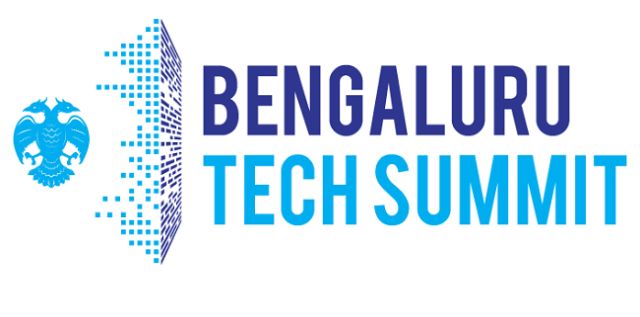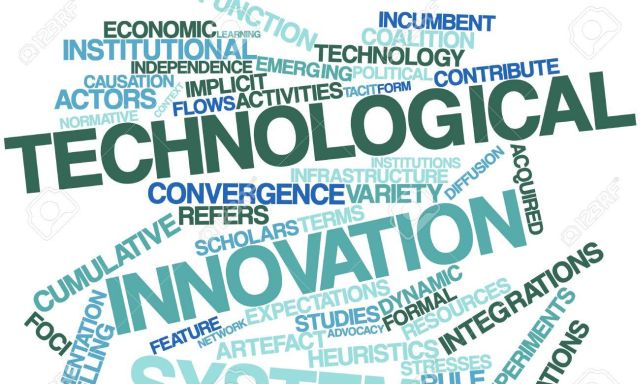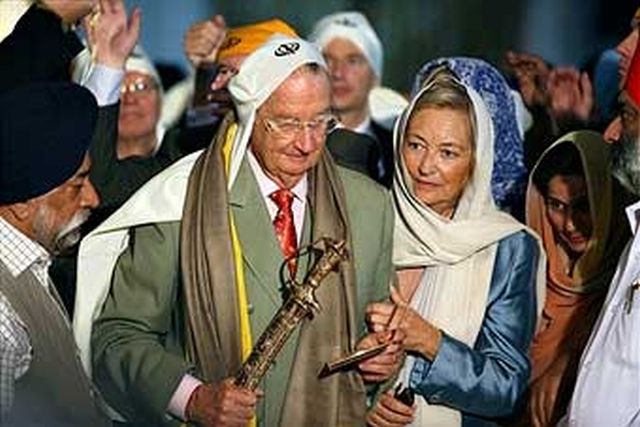
by Editor | Jun 6, 2025 | Food & Cuisine, Halal Food, Halal Industries, Halal Medicine, Uncategorized
NEW ZEALAND: – Ayesha Halal Certification Ltd, United World Halal Development (UNWHD) and Trade Not Riba dot Com proudly announces the 1st New Zealand Halal Expo And Halal Economic Forum 2025, a premier one-day international event focused on leveraging the country’s strengths in agriculture, sustainability, tourism and inclusive innovation to drive the global Halal economy forward.
Organized by UNWHD and supported by local stakeholders and international partners, this forum will bring together over 500 participants including global policymakers, business leaders, trade experts, investors, and Halal certification bodies. The event will serve as a strategic platform to explore transformative opportunities across sectors such as Halal-certified food and beverage (F&B), tourism, logistics, pharmaceuticals, cosmetics, and digital innovation.
New Zealand’s reputation as a leader in sustainable agriculture, tourism, multicultural inclusivity, and high-quality exports positions it as an ideal venue for this global event. The Halal Economic Forum 2025 will catalyze dialogue, foster investment, and facilitate meaningful cross-border partnerships across the OIC, ASEAN, and Asia-Pacific regions.
Key highlights of the forum include:
- Opening Ceremony & Keynote Addresses by New Zealand government representatives, ambassador/consulate general, and industry pioneers.
- Investors Summit & B2B/G2G Networking Sessions focusing on Halal market opportunities and trade expansion.
- Sector-Focused Panels & Workshops covering Halal tourism, certification, compliance, logistics, digital transformation, and innovation in food and health sectors.
- Product Showcase of Halal-certified goods and services by global and local brands.
This event continues the global momentum set by Halal Economic Forum & World Halal Day, celebrated annually on November 1st and initiated by UNWHD. Previous celebrations were held in:
2014 – Singapore,
2015 – India,
2016 – Croatia,
2017 – United Kingdom,
2018 – South Korea,
2019 – Russia,
2020 – Virtual,
2021 – South Africa,
2022 – Tatarstan,
2023 – Indonesia,
2024 – Singapore.
These events have left a lasting economic, cultural, and diplomatic impact across continents, creating a unified voice for Halal awareness, trade promotion, and ethical growth.
New Zealand 2025 aims to solidify the country’s place in the global Halal ecosystem by fostering:
- Enhanced trade connectivity
- New investment pipelines
- Halal-friendly tourism initiatives
- Inclusive job creation and academic collaboration
- Long-term economic resilience through ethical practices

by admin | May 25, 2021 | Business Summit, Corporate, Corporate Buzz, Events, Markets, Technology
 Bengaluru : The 21st edition of the Bengaluru Tech Summit from November 29 to December 1 would focus on innovation and impact, an official said on Friday.
Bengaluru : The 21st edition of the Bengaluru Tech Summit from November 29 to December 1 would focus on innovation and impact, an official said on Friday.
“The summit has been instrumental in promoting the IT industry over two decades. The focus is on providing opportunities to drive innovation and promote entrepreneurship in new technologies, by convergence of software and hardware for connected devices,” state IT Principal Secretary Gaurav Gupta told reporters at a preview of the event here.
As the state’s annual flagship event, the three-day summit in Bengaluru Palace in the city centre will focus on innovation and its impact.
Home to about 4,000 tech start-ups, Bengaluru is the world’s fourth largest technology hub after the Silicon Valley and Boston in the US and London in Britain, with one of the best start-up ecosystems.
“Bengaluru has emerged as one of the global innovation hubs in the league of Tokyo in Japan, Silicon Valley in the US and Tel Aviv in Israel. The summit will provide a platform for knowledge sharing on emerging technologies like Artificial Intelligence, Robotics and Blockchain,” said state Chief Minister H.D. Kumaraswamy on the occasion.
The state government has been instrumental in driving the IT, IT-enabled services and Electronics System Design and Manufacturing (ESDM) industries across the state over the years with policy initiatives, incentives and support infrastructure.
“As torchbearer for the IT and BT (biotech) industries, Karnataka has been pioneering initiatives to develop expertise in key economic sectors. The event will provide an opportunity to the industry and its stakeholders to connect minds for growth,” said state Industries Minister K.J. George.
The summit will have multi-track conference, B2B expo, thought leaders conclave, IT export awards, Bengaluru tech exchange, show stoppers, product launch and global innovation zone and start-ups.
“The summit holds a special relevance as we are focused on providing start-ups and entrepreneurs opportunities and ecosystem to help them thrive,” state IT Vision group Chairman and Infosys co-founder S. Gopalakrishnan at the preview briefing.
The conference will have 250 experts address 3,500 delegates and 300 exhibitors showcasing their technologies, products and services to about 11,000 visitors.
“The event will also enable the IT industry stakeholders to leverage innovations and their spin-offs on enterprises and businesses worldwide,” noted Gupta.
Leading IT and electronics associations like Nasscom, IESA, TiE, ABAI and Data Security Council of India are partnering to co-host the mega event in this tech hub.
Delegates and companies from Britain, Germany, Netherlands, Korea and Japan will also participate in the summit.
—IANS

by admin | May 25, 2021 | Business Summit, Corporate, Corporate Buzz, Events, News, Politics, Social Round-up
 By Aroonim Bhuyan,
By Aroonim Bhuyan,
New Delhi : When Prime Minister Narendra Modi visits Sweden and England from April 16 to 20, during the course of which he will participate in the first ever India-Nordic Summit and this year’s Commonwealth Heads of Government Meeting (CHOGM), cooperation in the areas of innovation, technology and education will top his agenda.
Modi will reach Stockholm on April 16 evening in what will be the first prime ministerial visit from India to Sweden in 30 years since the visit of then Prime Minister Rajiv Gandhi in 1988.
On April 17, Modi and his Swedish counterpart Stefan Lofven will hold a bilateral summit during which bilateral, regional and global issues are expected to figure.
According to Sweden’s Ambassador to India Klas Molin, innovation is an important aspect of the India-Sweden relationship.
“How do we cooperate further, how do we get our best and the brightest people together, how do we also perhaps think about funding certain areas, how do we go into areas where we can cooperate even more and develop new technologies, create employment and sustainable solutions on a number of issues,” he said.
During Modi’s visit, an India-Sweden Innovation Partnership is also expected to be launched.
“I think it is something we are discussing with the Indian side but exactly how this will look, of course, will have to be finalised,” the ambassador said.
“But I think it is a way of focusing our attention on both sides to create a platform that, in turn, can attract investments, that can attract companies to plug in.”
With education being another sector in which the two sides are expected to forge deeper ties, Molin said “we are hoping to increase exchanges between our universities”.
“Student exchanges… graduates, doctorate and post-doctorate. The sky is the limit here,” he said.
On bilateral economic relations, the Ambassador said that trade is growing on both sides “and quite impressively so”.
Though bilateral trade dipped to $1.9 billion in 2016-17 from $2.17 billion, both countries have set a lofty total trade target of $5 billion.
There are over 170 Swedish companies in India that have invested $1.4 billion since 2000 while 70 Indian companies have established their presence in Sweden.
On April 17, India and Sweden will also co-host the first ever India-Nordic Summit, where, apart from Modi and Lofven, the Prime Ministers of the other four Nordic countries of Denmark, Finland, Iceland and Norway will also be present.
Molin said that Nordic countries are close as neighbours and cooperate very closely in a number of issues.
“But we are not a political entity in that way,” he said. “It’s not like the EU, it’s not a regional organisation in any way. It’s a convenient forum.”
According to Subrata Bhattacharjee, Joint Secretary (Central Europe) in the Ministry of External Affairs, the Nordic region represents a prosperous society with high incomes and a strong focus on quality and innovation.”
“For India, Nordic countries are a potential source for clean technology, environmental solutions, port modernisation, cold chain, skill development, innovation etc.,” Bhattacharjee said at a media briefing here in connection with the upcoming visit.
According to figures provided by the External Affairs Ministry, India’s trade with the Nordic countries totaled around $5.3 billion in 2016-17, with cumulative foreign direct investment in India at $2.5 billion.
From Sweden, Modi will leave for Britain on April 17 evening. This is the third exchange of prime ministerial visits after Modi’s visit to Britain in November 2015 and British Prime Minister Theresa May’s visit to India in November 2016, her first outside the European Union after assuming office.
At a separate media briefing here, British High Commissioner to India Dominic Asquith said the visit comes at a time when the bilateral relationship is in “very, very good health”.
Modi’s visit to Britain this time has been themed “Living bridge and tech partnership”. Modi and May are scheduled to hold a bilateral summit on April 18.
Stating that trade between the two countries increased by 15 per cent in the last one year, Asquith said that it is “remarkably balanced” in terms of trade in goods and services.
In terms of finance, he said the London Stock Exchange is playing an increasingly important role as a place to raise money to meet India’s huge infrastructure requirements.
In terms of investments, he said that while Britain is the largest investor in India among the G20 countries, India is the fourth largest investor in Britain.
“Then what will be very much a focal point is the technology partnership between the two countries,” he said. “The complementaries, strengths that each of us have and they are truly complementary.”
Asquith said that both sides will look into putting more resources in this sector in areas like digital aspect of technology, collaboration, artificial intelligence, advanced manufacturing, and data protection and the fintech that goes with that among others.
According to K. Nagaraj Naidu, Joint Secretary (Europe West), both sides are looking at announcing an India-UK Tech Alliance which will comprise young CEOs from both the countries who have done exceptionally well in the tech space.
In terms of cooperation in education, Asquith said that there was a 30 per cent rise in the number of student visas issued by his country to Indians last year.
Stating that 14,000 Indian students go to Britain for masters degree programme every year, he added that “we want to build on that”.
Regarding this year’s Commonwealth Heads of Government Meeting (CHOGM) which Modi will attend in London on April 19-20, the High Commissioner said that around 50 heads of state and government will be present.
The agenda, he said, will include climate change, vulnerability of small island nations, peacekeeping and helping poorer countries.
(Aroonim Bhuyan can be contacted at aroonim.b@ians.in )
—IANS

by admin | May 25, 2021 | Opinions
 By Amit Kapoor,
By Amit Kapoor,
The New Year is upon us. It has been 17 years into the 21st century and if one word has to define this period, ‘innovation is bound to reign supreme. Technological innovation in every field has taken place at such a rapid pace over the last two decades that most of it is taken as given.
It is hard to imagine that a world obsessed with acronyms like AI, VR, and EV was still very much dependent on the post office barely 17 years ago. It is unfathomable and potentially scary from some aspects as to what the future holds for mankind.
With the world innovating at breakneck speed, no country wants to be left behind the curve. China is the latest kid in the block. It is no longer the low-labour-cost country that makes it the manufacturing powerhouse of the world. Now, the country’s manufacturing strengths lie in its strong supply chain networks and advanced production knowhow. In fact, in its 13 Five Year Plan that began in May 2016, China laid out a roadmap to become an “innovative nation” by 2020 and an “international innovation leader” by 2030.
Even before these goals were set, the country had doubled its spending on R&D between 2000 and 2016 from 0.9 percent of its GDP to 2.1 percent. It is no surprise then, that the greater Shenzhen-Hong Kong area finds itself ranked second in terms of global inventive clusters as measured by patents.
It is clearly time for India to adopt innovation as a paradigm and a long-term principle to be competitive on the world stage. Like China, it is critical that India works upon building an enabling conducive environment for innovation to take place. This includes, but is not limited to, access to technology required for scaling, availability of funding, leadership and skill, and also a market for all this.
As per the Global Innovation Index, India has shown consistent improvement since 2011 and its performance has been ahead of the average lower-middle- and upper-middle-income countries of the world. However, the India State Innovation Report 2017 has brought out some interesting highlights on the state of innovation in India.
First, on a national scale India lags considerably behind the major economies of the world. As of 2015, India spent 0.88 percent of its GDP on R&D while Brazil, the US and Japan spent 1.2, 2.8 and 3.4 percent respectively. As for patents, India had filed 17 per million people while Brazil, China, the US and Japan were at 34, 541, 910 and 3,716 respectively. Finally, the India’s share of global publications stood at 4.2 percent while China and the US were at 20.2 and 25.3 respectively. Therefore, there remains a vast gap for India to cover if it to catch up with the global economies in the field of innovation.
It is not a preposterous argument to make that the economy which stays ahead in the race for innovation will dictate global dominance. As things have panned out over the last year, USA seems to have been ceding that ground to China. Denying realities like climate change to support industries of yesteryears like coal and closing doors on the very people who built the country seem inimical to the innovative spirit that has come to define America. A huge vacuum will probably be left behind, and India needs to grasp the opportunity while the time is ripe.
Second, coming to the sub-national level, India shows a very mixed performance. Delhi, Tamil Nadu and Maharashtra were the most innovative states in 2017. A three-way categorisation was also done based on the classification for developmental stages of economies by Michael Porter, considered the guru of competiveness. Delhi, Karnataka and Uttar Pradesh turned out to be the leading states in their respective stages.
A striking feature of the state performance on innovation is that there is a clear demarcation running across India where the western and southern belt of states score considerable better than the rest of the country. This belt of states also performs economically well than the rest of India, but per capita income explains only 60 percent of the innovation scores. Higher industry presence and better prevalence of institutes of higher education along with improving linkages between the two has a substantial impact making the environment conducive for innovation across these states.
However, there are a multitude of challenges faced even by these states in undertaking innovation. The first and most basic one is that the university system in India lacks focus on research and innovation. Inadequate funding dedicated to education does not help in building adequate facilities for research either. Second, the patenting process is quite cumbersome in India and significant amount of resources need to be devoted towards it, something which the industry typically lacks. Finally, India lacks stringent regulations and IP laws, which hinder any innovative activities. It is a telling fact that in the International IP Index released by the US Chamber of Commerce, which ranks 45 economies based on patents, trademarks, copyrights, enforcement and international treaties, India ranks 43.
There is simply no time for complacency for India when it comes to matters of innovation. The country has a perfect opportunity to get onboard the innovation train that is swiftly chugging away beyond its reach. Almost 15 percent of the start-ups in Silicon Valley have been founded by Indians. We clearly have the capability to do the same in India. Only the enabling factors are lacking.
(Amit Kapoor is chair, Institute for Competitiveness, India. The views expressed are personal. He can be contacted at amit.kapoor@competitiveness.in and tweets @kautiliya. Chirag Yadav, researcher at Institute for Competitiveness has contributed to the article)
—IANS

by admin | May 25, 2021 | Business, Economy, Investing, Large Enterprise, Markets, News, Technology

Belgium’s King Phillipe and Queen Mathilda
By Aroonim Bhuyan,
New Delhi : When Belgium’s King Phillipe and Queen Mathilda arrive on a state visit to India from November 5 to 11, cooperation in the field of innovation will be the key area of focus, Belgian Ambassador to India Jan Luykx said.
“With the global challenges confronting the world like climate change and also the SDGs (the UN’s Sustainable Development Goals) that have to be implemented, you need innovative projects for all sectors of society and of the economy,” Luykx told IANS in an interview here.
“Now, nobody does it on their own, you do this in cooperation between countries worldwide. You also do it bilaterally,” he said.
“That is why the programme of this state visit, which comprises several seminars, is focused on innovative technologies.”
According to a statement issued by the Belgian Embassy ahead of the royal visit, Belgium possesses unique assets and innovative technologies, going from novel sectors such as nanotechnology or biotech, and innovative processes in clean technology, to the more traditional sectors such as food processing, glass production and heavy industries.
There will be representatives of 86 companies and 13 academic and scientific organisations accompanying the royal couple in the state visit and dozens of agreements are expected to be signed in the fields of trade and academic relations.
Ambassador Luykx said that there will be two seminars held in New Delhi — one on innovative technologies in cement industries and the other on innovative technologies in the food sector.
“In Mumbai, there is the clean tech seminar for smart cities. It is all about green technologies, green energy, waste water treatment,” he said.
Stating that bilateral trade between India and Belgium is around 12 billion euros yearly, he noted that diamonds form an important part of this.
“I think out of the 12 billion euros, about eight billion euros is Belgium’s exports to India and four billion euros is Indian exports to Belgium,” Luykx said.
“Out of that eight billion euros of Belgian exports to India, 80 per cent is diamonds. Some other important sectors are chemicals, pharmaceuticals, and engineering products.”
The Ambassador said that there are around 170 to 180 Belgian companies active in India and quite a number of them are producing not only for the Indian market but also for exports.
In this connection, he mentioned a company called Barco based in Noida that makes big display screens and equipment for projecting films and videos in movie halls.
“As as far as Smart Cities are concerned, for example, there is a Belgian company called Tractebel,” Luykx said.
“They are a consultancy engineering company and the main consultants for three smart cities coming up in India,” he said.
“And then we have a company called Vito that has developed technologies, especially for waste water treatment. There are already some pilot projects running in India.”
Asked whether the King’s visit will help in the forward movement for a free trade agreement between India and the European Union (EU) with Belgium’s capital Brussels being the EU headquarters, the Ambassador said that his country was definitely interested in such an agreement “as soon as possible”, but it was for the EU to decide on the talks for this.
A Broad-based Trade and Investment Agreement (BTIA) between India and the EU has been hanging fire for 11 years now despite 16 rounds of negotiations.
In the India-EU Summit held here last month, it was only decided that the talks would resume when all conditions were met.
While pointing out that the King is coming on a bilateral state visit and this will remain the focus, Luykx said: “Whatever else, it is clear that our message will also be that we want good and strong relations between India and the EU in all fields because whatever is good for the relationship between EU and India is automatically good for Belgium.”
After arriving here on November 5, the royal couple will visit the Taj Mahal the next day.
On November 7, there will be a ceremonial welcome for the royal couple following which the King will hold a bilateral meeting with Prime Minister Narendra Modi. Later in the evening, the King and Queen will call on President Ram Nath Kovind, who will host a state banquet in their honour.
The royal couple will leave for Mumbai on November 9 and, after attending the programmes planned there, will depart from India on November 11.
This will be the third state visit by a Belgian king, with the previous ones happening in 1970 and 2008.
(Aroonim Bhuyan can be contacted at aroonim.b@ians.in)
—IANS





